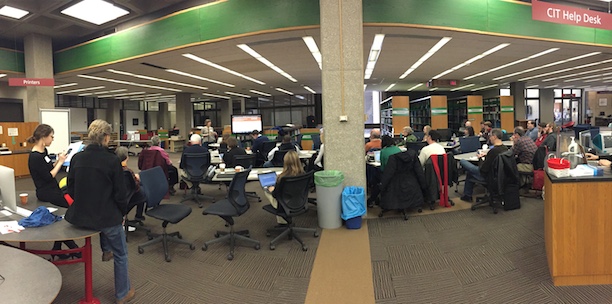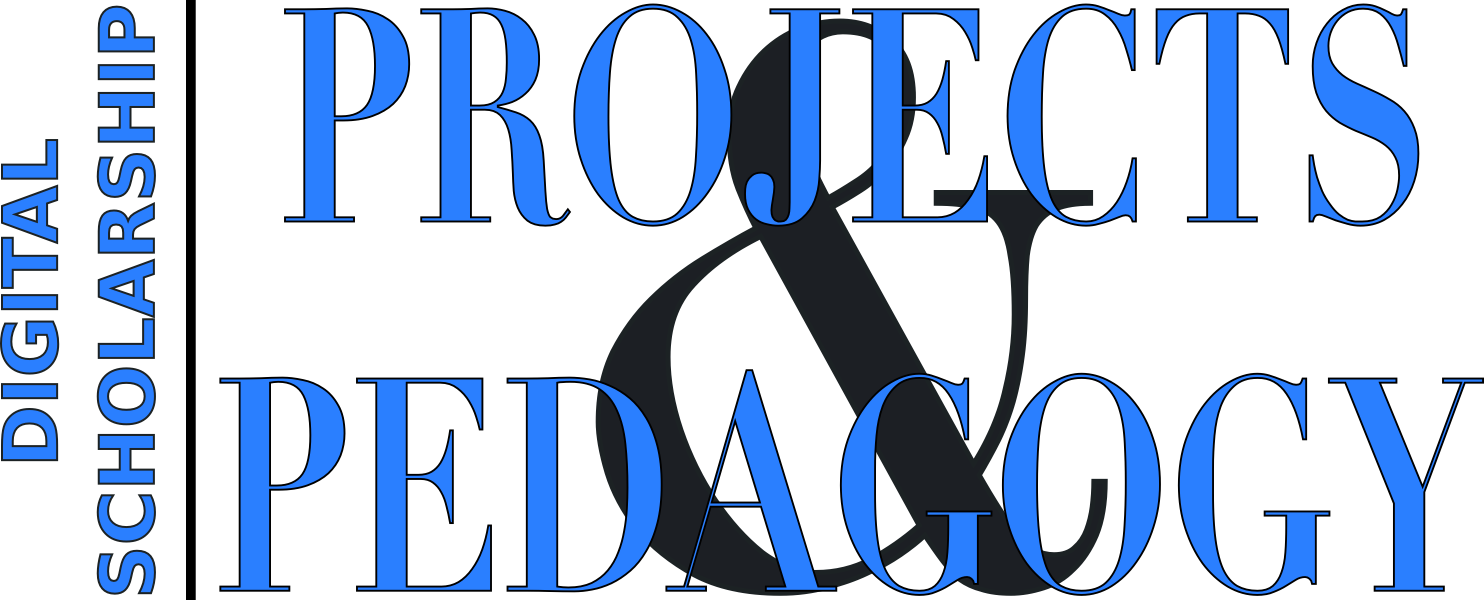Oberlin EdTech Winter Workshop and Communities of Practice

Oberlin’s Mudd Library recently hosted the EdTech Winter Workshop for professional staff, organized by Albert Borroni and the Oberlin Center for Technology Enhanced Teaching (OCTET). Thirty or so members of the Oberlin community attended, representing divisions from around the campus: the Allen Memorial Art Museum (AMAM), Language Lab, Center for Information Technology, and the Library.
Because I had to run off to the Mt. Vernon Public Library for the launch of an exhibit — more on this in a subsequent post — I was only able to stay for the morning portion of the meeting, but I drew out at least two significant observations relevant to Ohio Five Digital Scholarship. (And a bonus meta-observation that I’ll reserve for the end of the post.)
First, in back to back presentations Liliana Milkova, Curator of Academic Programs for the AMAM, and Megan Mitchell, Digital Initiatives Coordinator for the Library, spoke about an Omeka project completed in fall 2015 as part of a general groundswell in interest for building object-oriented pedagogies. Milkova mentioned Capturing the Body, a set of digital exhibits that were curated by students in Wendy Kozol’s course, *Visible Bodies and the Politics of Sexuality*.
In addition to discussing specific projects and efforts, Mitchell pointed out that recent faculty interest in using Omeka some of this interest might be attributed to the increasingly-quick-to-demo (share? Not sure where they would have demo-ed) faculty who are invested in the platform, including? Amy Margaris (Anthropology) and Danielle Skeehan (English). This growing interest in Omeka is not as much about the adoption of a relatively low-barrier-to-entry platform as it is about the local, interdisciplinary community of practice that is growing out of the shared investment in digital pedagogies.
Of course with interdisciplinarity come the opportunities for fortuitous cross-pollinations, and it is precisely these kinds of opportunities that Tim Elgren, Dean of the College of Arts and Sciences, imagined Oberlin might bake into future iterations of the curriculum. He gave a brief presentation on, among many things, a desire to complement the notion of “the major” — that deep domain knowledge that all undergraduates build — with theme-based, in interdisciplinary “clusters.” In the still-under-construction Inn at Oberlin, there are plans for a space called “Studio C” (the “C” is for “convergence”) that will provide space for faculty and students from different disciplines to come together and tackle big questions such as *gender identity in the 21st century*, or *the politics of water*. In the not-so-distant future, Oberlin students might complete clusters of question-based courses offered by several different departments and, in the process, triangulate their opinions and develop plans of action based on the kind of nuanced exploration that a liberal education provides.
This corner of Dean Elgren’s presentation frames my second observation, which is fully (I admit) filtered through the lens of my experience and my agenda of furthering digital scholarship in the consortium: there seems to be great possibility to leverage Oberlin’s convergence clusters, at least as they are conceived at the moment, for pointedly humanistic digital endeavors. Not only might one think about, for example, the delivery of humanities data to different audiences and through different media than we have imagined, but one might also interrogate the tools and media with which we present those data. When we begin to ask whether or not databases present arguments, or about how we share information across the digital divide, we begin to tread a specifically humanistic mode of digital exploration that is interdisciplinary in form and function. In the interest of Ohio Five Digital Scholarship — my admitted and clear bias — I wonder how reimagined curricula, like the version of Oberlin’s that was imagined during the EdTech meeting, will take advantage of the inherent interdisciplinarity of what’s being called “Digital Humanities.”
A common theme between these two observations, to my mind, is the cultivation of communities of practice. In both the reporting of the present state of digital pedagogies and the prospective view of the curricular future, we see a growing culture of digital praxis and the frameworks that will continue to foster such growth well into the future. Indeed, the very gathering itself — a semi-annual meeting of staff who are involved in technologically-informed research and teaching — is an example of a relatively easy way to get local folks together to talk about what they are up to. This example especially resonates with me as I find myself wrestling with how we facilitate such conversations over an entire consortium.
Do you have good models for bringing local or larger communities of practice together? Share with us on our new Facebook page or in the comments!
